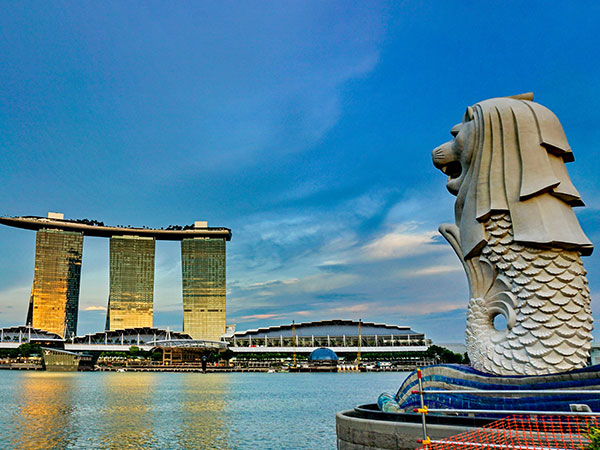



Mexico is a country in North America, bordered by the United States to the north and Guatemala and Belize to the southeast. Mexico is attractive for several reasons, including its rich culture, beautiful landscapes, delicious cuisine, and affordable cost of living. It also offers a diverse range of experiences, from ancient ruins and historical cities to stunning beaches and natural wonders.
Mexico is generally considered a good place for both work and settling in for expats, particularly due to its affordability, rich culture, and welcoming locals. While safety and job prospects can vary by location, Mexico offers opportunities for career growth and a high quality of life. Mexico received a total of 86.41 million visitors, which includes both international tourists and day-trippers. This number represents a 15.5% increase compared to the previous year.
In Mexico, a Permanent Residence Visa, or Green Card, allows individuals to live in Mexico indefinitely without needing to renew their status. It grants most of the rights of a Mexican citizen, except for voting, and includes the right to work without a separate work permit. Permanent residency can be obtained through various paths, including after four years of temporary residency, family ties to a Mexican citizen or permanent resident, or through economic solvency.
A Mexico Permanent Residence Permit, also known as a Permanent Resident Visa, allows foreigners to live in Mexico indefinitely. It’s obtained through various pathways, including financial solvency, family ties to a Mexican citizen or permanent resident, or after being a temporary resident for a specified period. Once granted, it allows the holder to live and work in Mexico without restrictions.
1. Indefinite Stay and Work: Permanent residents can live and work in Mexico without the need to renew their status or obtain separate work permits.
2. Healthcare Access: You can enroll in Mexico’s public healthcare system (IMSS) or opt for private insurance.
3. Education: Access public schools and universities under the same conditions as Mexican citizens.
4. Property Ownership: You can own property anywhere in Mexico, but in restricted zones, you may need a trust or Mexican corporation.
5. Path to Citizenship: After five years of permanent residency, you can apply for Mexican citizenship.
6. Travel: Enjoy visa-free or visa on arrival access to numerous countries, including the Schengen Area, Canada, and Japan.
Several categories of individuals are eligible for a Mexican Permanent Resident Card, including :
1. Temporary Resident Card Holders: After four years of holding a Temporary Resident Card, foreigners can apply for a permanent resident card. This period can be reduced to two years for those with a spouse visa.
2. Spouses of Mexican Citizens or Permanent Residents: Spouses of Mexican citizens or permanent residents are eligible for permanent residency after two years of living in Mexico with a Temporary Resident Card.
3. Family Members of Mexican Citizens or Permanent Residents: Parents, unmarried children under 18, grandparents, siblings under 18, grandchildren, and great-grandchildren of Mexican citizens or permanent residents are eligible for permanent residency through family reunification.
4. Retirees with Sufficient Income: Retirees with a monthly income exceeding a certain amount (currently $1,620 USD) are eligible for permanent residency.
5. Investors: Individuals who invest a substantial amount (currently $200,000 USD) in Mexico can qualify for permanent residency.
6. Parent of a Child Born in Mexico: As a child born in Mexico is automatically granted Mexican citizenship, the parent(s) can apply for permanent residency.
A Mexican Permanent Resident Card is valid indefinitely. It does not expire and does not require renewal. However, there are exceptions for alien minors three years of age or less, who need to renew the card annually until they turn three, and from three to eighteen, they need to renew it every four years.
To convert a Mexican Permanent Resident Visa into a Permanent Resident Card, you must apply to the National Immigration Institute (INM) within 30 days of arriving in Mexico. The visa itself doesn’t grant long-term residency; the card is the actual document allowing you to live in Mexico long-term. You’ll need to pay a fee, which is around 5,000 Mexican Pesos (or about US$250), for the card.
To transition from a Mexican Temporary Resident card to a Permanent Resident card, you generally need to have held a Temporary Resident card for four years. You’ll need to apply for the change of status at the National Immigration Institute (INM) in Mexico. The application must be submitted at least 30 days before your current Temporary Resident card expires.
Financial Solvency
Monthly Income: Prove a net monthly income (after taxes) of approximately $7,100 USD.
Investments: Have a minimum investment of $293,000 USD.
Other Documents
If you lose or damage your Mexican Resident Card, you need to report it to the local immigration office and apply for a replacement. You’ll need to gather the required documents and pay a processing fee. If you’re abroad, you can apply at the nearest Mexican embassy or consulate.
To transition from Mexican permanent residency to citizenship (naturalization), a foreigner typically needs to reside legally in Mexico for at least five years. This period of residency, whether as a temporary or permanent resident, is a key requirement for applying for citizenship. After fulfilling this residency requirement, individuals can apply for naturalization, which involves demonstrating knowledge of Mexican history and culture, as well as Spanish language proficiency.
Mexico’s immigration policies and practices are complex and have both positive and negative aspects. Mexico has a broad definition of asylum, which is considered protective for asylum seekers, and it also has a high approval rate for asylum applications. However, the system also faces challenges, including underfunding and an increasing number of applications. Additionally, Mexico has seen a surge in asylum requests and has a history of supporting the rights of its emigrants. The country also benefits economically from remittances sent by Mexican emigrants in the U.S.
Mexico offers various immigrant permits, broadly categorized as non-immigrant and immigrant visas.
Non-immigrant visas are for short-term stays, while immigrant visas are for those seeking long-term or permanent residency. Within the immigrant category, there are temporary and permanent resident visas, each with specific requirements and benefits.
Working in Mexico can be a good option due to lower cost of living, potential for career growth, and access to a rich culture. The country also offers a variety of benefits like health insurance and paid vacation days, depending on the employer. However, salaries may be lower compared to other countries, and finding work as a foreigner can be more challenging.
1. Automotive
2. Electronics
3. Aerospace
4. Tourism
5. Agriculture
6. Oil and Gas
7. Mining
8. Construction
1. Petróleos Mexicanos (Pemex): A state-owned oil company, Pemex is a significant employer in Mexico.
2. Fomento Económico Mexicano (FEMSA): A large multinational beverage and retail company.
3. América Móvil: A telecommunications company with operations in Mexico and other regions.
4. Grupo Bimbo: A food company known for its bread and snacks.
5. Walmart de México: A major retail chain with a large workforce.
6. Other Significant Employers: Banorte, Cemex, ALFA, Banamex, BBVA México, and Grupo Elektra.
1) Culture: Mexico is known for its welcoming culture, with many expats feeling at ease settling in. The country has a vibrant history, with influences from indigenous cultures and European traditions.
2) Cost of Living: Mexico can be a relatively affordable place to live, especially in comparison to many Western countries. However, costs vary depending on location and lifestyle.
3) Weather: Mexico has a diverse range of climates, from hot and sunny beaches to cool mountain towns, making it possible to find your ideal weather.
4) Safety: Safety levels vary by location, with some areas being safer than others. It’s important to research specific areas and take necessary precautions.
5) Language: While English is spoken in some tourist areas and among expats, learning Spanish is highly recommended for better integration and navigating daily life.
6) Job Opportunities: Common jobs include production workers, sales employees, and various positions in the service sector. There’s also a growing demand for specialized roles like software developers and accountants.
1) Temporary Resident Visa with Work Permission:
This visa is for those who wish to stay in Mexico for more than 180 days but less than four years and have a job offer.
2) Permanent Resident Visa:
This visa allows individuals to stay in Mexico indefinitely and is suitable for those seeking permanent residency or Mexican citizenship.
3) Business Visitor Visa:
This visa is for short-term business trips and does not permit working for remuneration.
4) Working Visitor Visa:
This visa allows a stay of up to 180 days and permits working for remuneration.
Basic Requirements:
1) Valid Passport
2) Completed Visa Application Form
3) Passport Photos
4) Application Fee
Coraledu’s mission is to empower internationals to thrive in their lives abroad. We offer tailored work and settlement solutions designed to facilitate success for individuals and their employers worldwide, with a particular focus on Mexico. Contact us to discover how we can support you or your employees in achieving both professional and personal fulfillment abroad.
.
can help – fill in your details and we’ll call you back.



